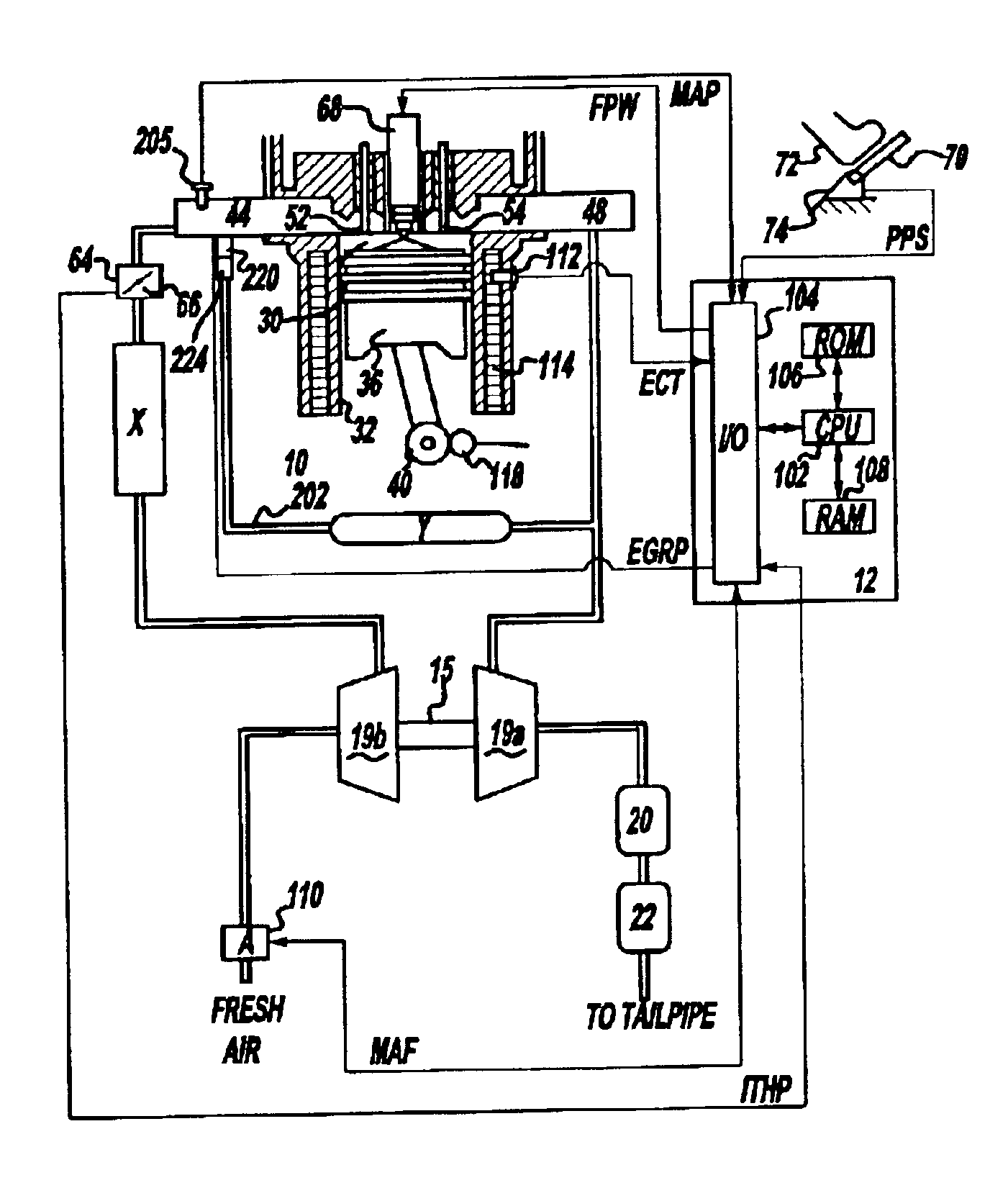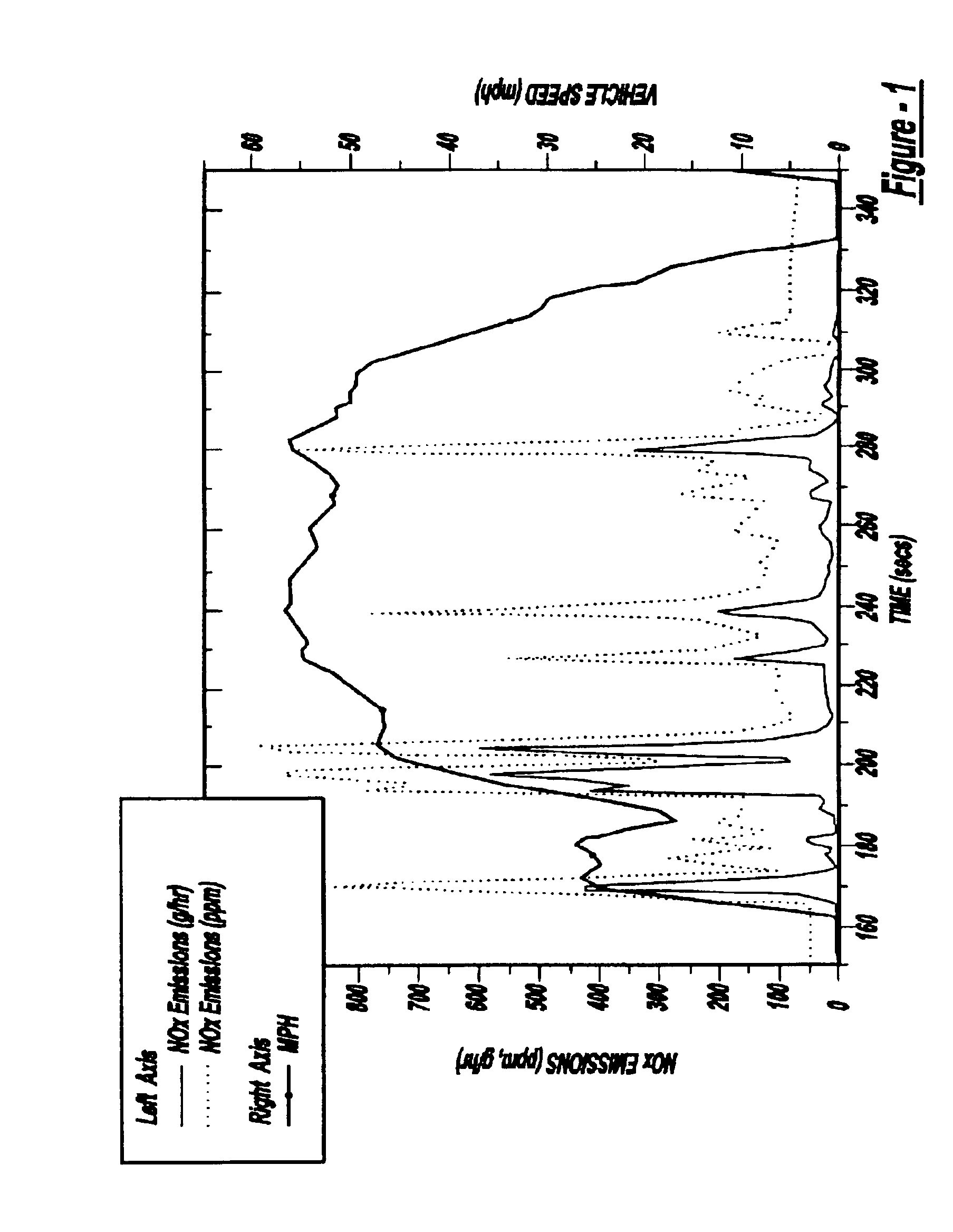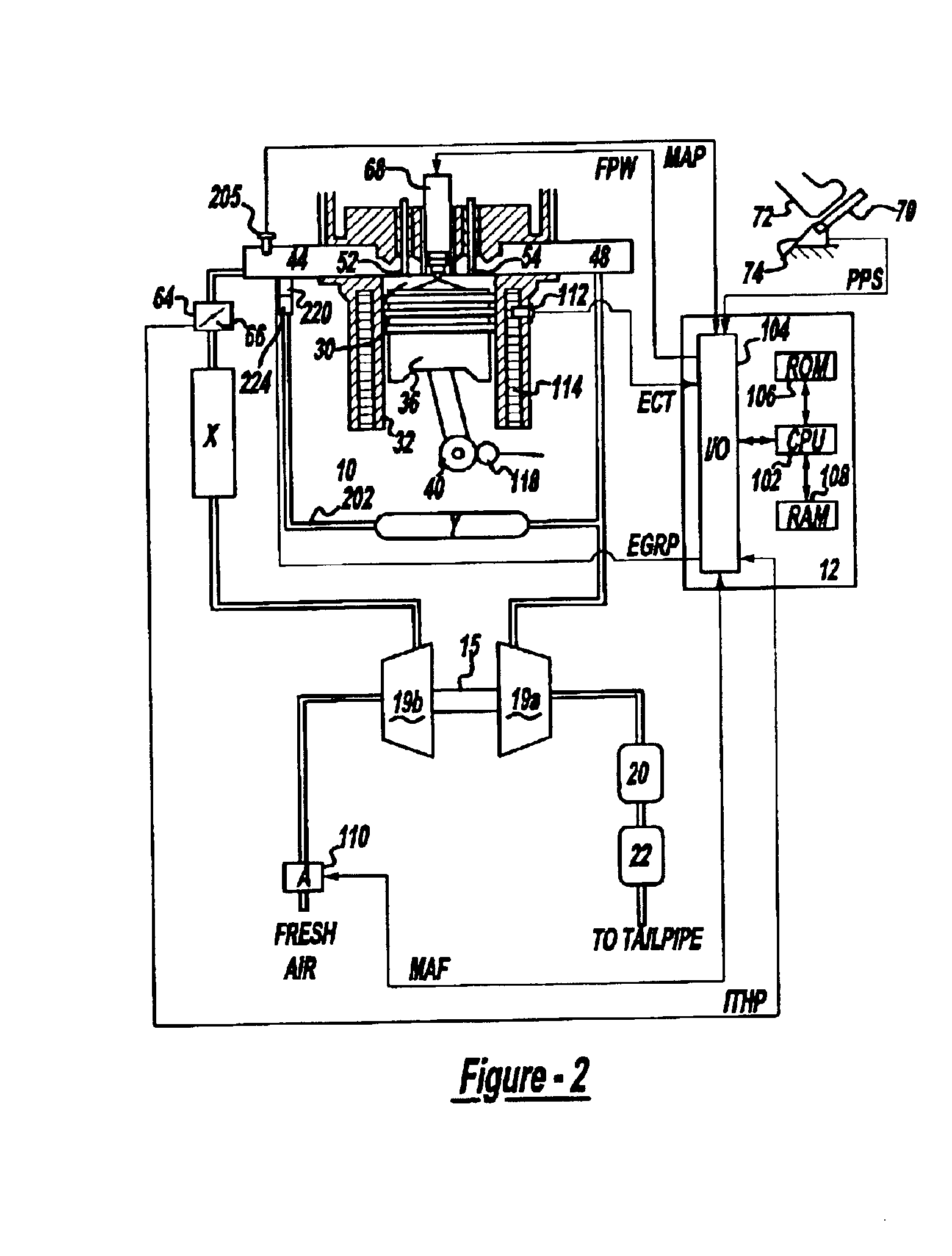System and method for reducing NOx emissions during transient conditions in a diesel fueled vehicle
- Summary
- Abstract
- Description
- Claims
- Application Information
AI Technical Summary
Benefits of technology
Problems solved by technology
Method used
Image
Examples
Embodiment Construction
FIG. 1 shows NOx emissions during a transient emissions cycle of a vehicle powered by a typical turbocharged diesel engine. The Figure demonstrates that spikes in NOx emissions occur at various times during transient operation. Those spikes typically occur during hard acceleration and the primary reason for their existence is the interaction between the turbocharging system and the typical high pressure EGR system. During hard acceleration, the use of EGR is suspended in order to both divert exhaust flow through the turbine, which allows the turbocharging system to create boost, and increases airflow through the engine. However, without EGR, NOx emissions (concentration) increase dramatically. This comes at a time when the air and thus exhaust mass flow rate are very high, causing NOx production to spike dramatically.
During the a typical urban driving cycle, the time in which the engine is operated under conditions that produce these spikes accounts for only about 4-5% of the total ...
PUM
 Login to View More
Login to View More Abstract
Description
Claims
Application Information
 Login to View More
Login to View More - R&D
- Intellectual Property
- Life Sciences
- Materials
- Tech Scout
- Unparalleled Data Quality
- Higher Quality Content
- 60% Fewer Hallucinations
Browse by: Latest US Patents, China's latest patents, Technical Efficacy Thesaurus, Application Domain, Technology Topic, Popular Technical Reports.
© 2025 PatSnap. All rights reserved.Legal|Privacy policy|Modern Slavery Act Transparency Statement|Sitemap|About US| Contact US: help@patsnap.com



